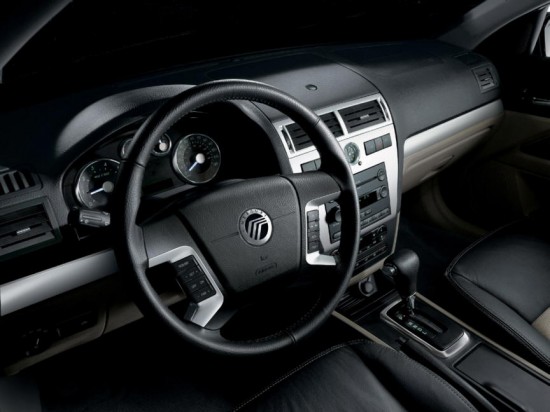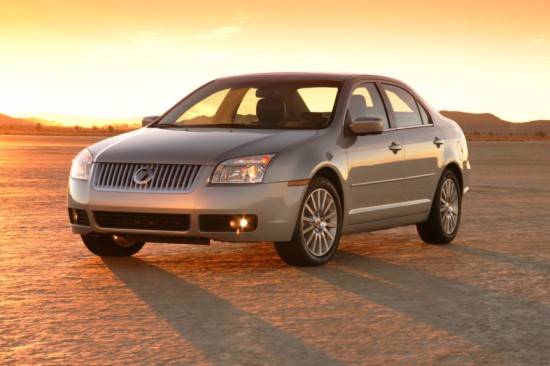2006 Mercury Milan
Welcome back, all you journalism fans. It’s time for the lightning round in America’s hot new game show, “How to Review a Mercury.”
For the first question, pick how you’d describe the 2006 Mercury Milan.
Choice A: “It’s the best car Mercury’s made in years.”
Choice B: “It’s an overpriced Ford Fusion.”
Choice C: “Is Mercury still around?”
And the answer is … well, it’s a trick question. A and B are both right, and C will probably be right in a couple of years.
The all-new Milan is the best car Mercury has made in a long, long time. It looks great, drives even better and starts at the bargain-basement price of $18,995. It’s a knockout.
At the same time, that’s a full $1,000 more than the Ford Fusion, a virtually identical car for all practical purposes. Sure, there are some styling differences between the two, but you’re basically paying at least $1,000 — or more than that on some higher end versions — for a robot to put “Mercury” on the hood instead of “Ford.”
If you’re sick of hearing jokes that involve the phrase “Fix Or Repair Daily,” it might be worth it.
In any case, it’s an outstanding car that can compete head-to-head with anything the Japanese have to offer. Just like its Ford cousin, it’s a stylish, solid, well-engineered car, and it’s probably the best midsize sedan the Ford Motor Company has made in two decades.
 You can tell the Milan has high aspirations as soon as you sit in the cabin. It has trim that looks like brushed aluminum, an upscale, two-tone color scheme, and contrasting colored stitching in the leather seats. Basically, it looks like a half-price Jaguar.
You can tell the Milan has high aspirations as soon as you sit in the cabin. It has trim that looks like brushed aluminum, an upscale, two-tone color scheme, and contrasting colored stitching in the leather seats. Basically, it looks like a half-price Jaguar.
Outside, it has the same feeling of sportiness and precision as the Fusion, with a chiseled, muscular body and distinctive front end. It’s not exactly the same as its Ford counterpart — its roof and side glass are subtly different, for instance, and the taillights look better — but they’re close enough that many people wouldn’t notice the difference.
The driving feel, however, is a carbon copy of the Fusion, which is nothing to complain about. It’s a great car for long commutes, but it also can be fun on twisty roads.
The base Milan comes with a 2.3-liter, four-cylinder engine that makes 160 horsepower. While that’s not an awful choice, a more fitting engine for this semi-luxury car is the 3.0-liter, 221-horsepower V6.
Mercury’s V6 engine is a good one, offering smooth, even acceleration at most speeds without ever sounding coarse or unrefined. It’s got a lot of pep.
An optional five-speed automatic transmission is another impressive piece of machinery, especially at the Milan’s price. It offers a nearly telepathic link with the driver, shifting faster and with more spunk during spirited driving and switching to smoother, easier shifts when you want to loaf down the highway.
Even at high speeds, the Milan’s cabin stays quiet enough to carry on conversations via whispers. It feels like high-end luxury cars did only a few years ago.
The Milan also shares a downside with the Fusion: it’s assembled in Mexico, unlike most of its competitors from “import” brands that are actually built here in the U.S.A. While the engineering and design work that went into this car went primarily to American employees, it’s a shame that it’s becoming difficult to find a real, all-American car nowadays.
It’s also a shame that Mercury couldn’t better differentiate the Milan from its cheaper Ford relative. Mercury’s lineup is now almost identical to Ford’s, and the brand needs to make itself into something more special if it wants to see substantial growth in the future.
Otherwise, we’ll have to start the next episode of “How to Review a Mercury” with choice C.







